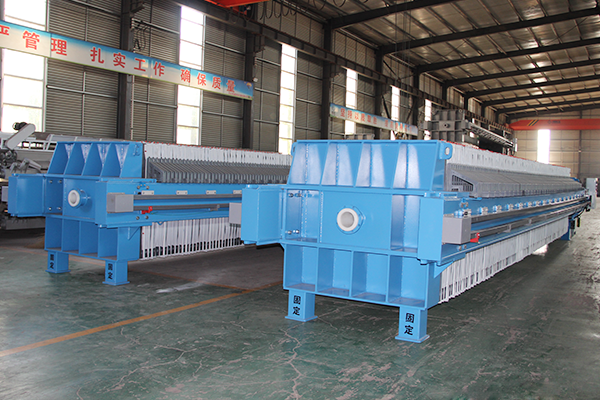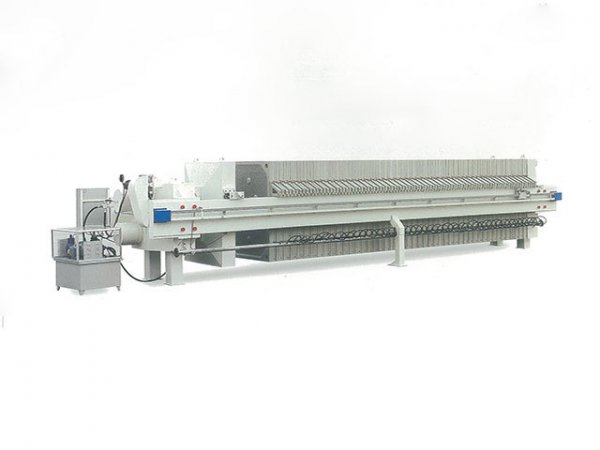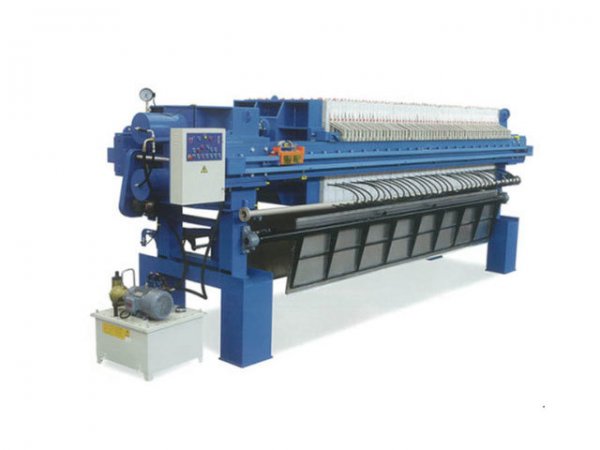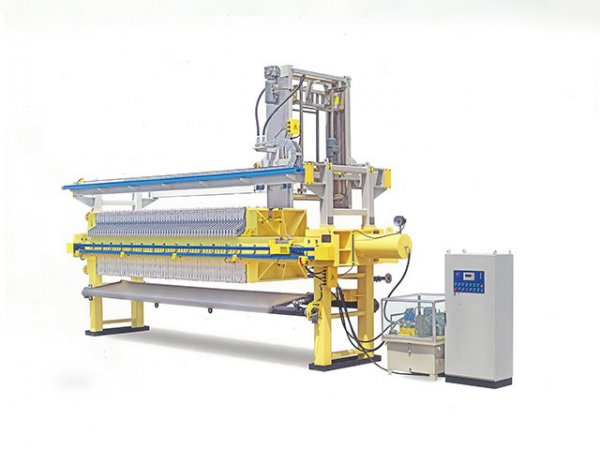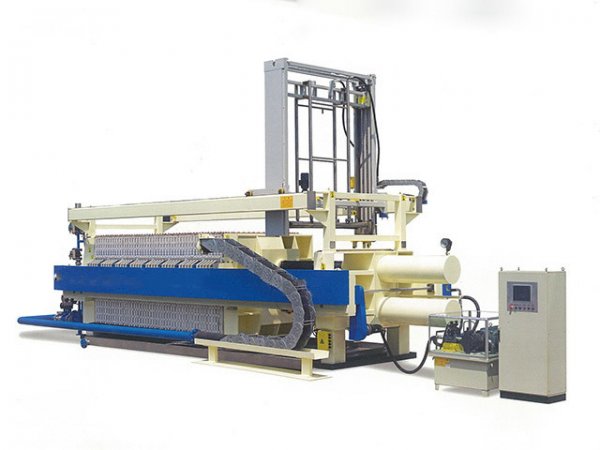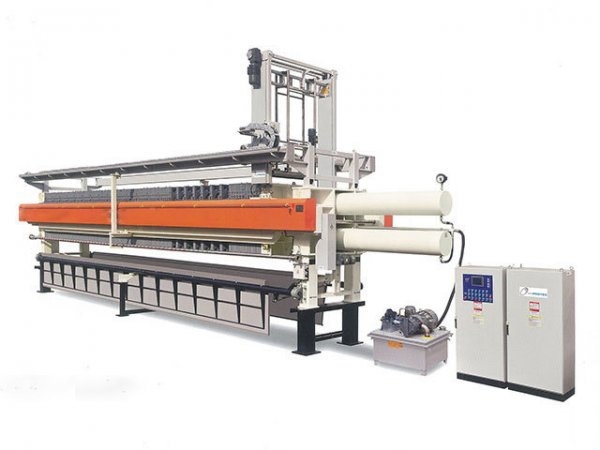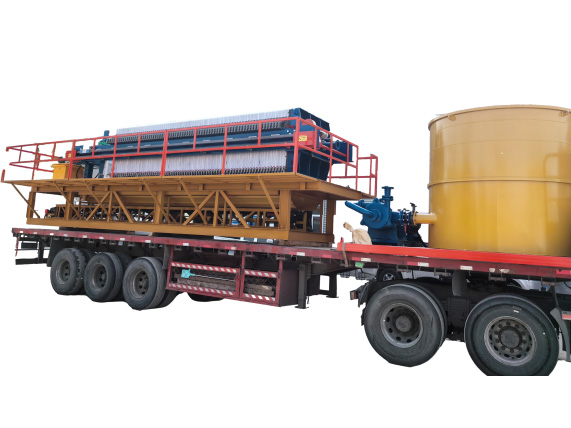NewsDetails
How Does the Diaphragm Filter Press Plate Achieve Efficient Pressing Dewatering? A Comprehensive Explanation
author:Shuangcheng time:2025-05-02 17:54:11 Click:85
In the field of industrial solid-liquid separation, efficient pressing dewatering technology is crucial for enhancing production efficiency and reducing processing costs. The diaphragm filter press plate, with its unique structure and operating mode, has become the core component for achieving efficient pressing dewatering. Understanding its working mechanism not only helps optimize industrial production processes but also provides solutions for solid-liquid separation challenges in various fields such as environmental protection, chemicals, and mining, which is significant for promoting sustainable industrial development.
I. Basic Understanding of the Diaphragm Filter Press Plate
1.1 Definition and Structure
The diaphragm filter press plate is the core component of a filter press for achieving solid-liquid separation and pressing dewatering. Its main structure includes a filter plate body, an elastic diaphragm layer, a feed inlet, and a filtrate outlet. The filter plate body serves as the supporting structure, providing a stable framework for the entire filtration process. The elastic diaphragm layer is the key to achieving efficient pressing and is usually made of rubber or polymer materials, exhibiting good flexibility and compressive resistance. The feed inlet is used to introduce the material to be processed, while the filtrate outlet is responsible for discharging the filtered liquid.
1.2 Working Principle
During the initial stage of filter press operation, material enters the filter chamber formed by the filter plate and filter cloth through the feed inlet. Under pressure, the liquid passes through the filter cloth and is discharged through the filtrate outlet, while solid particles are retained to form a filter cake, which is the conventional filtration process. After conventional filtration is completed, the critical pressing dewatering stage begins: the diaphragm layer is inflated with gas (such as compressed air) or liquid (such as water), causing it to expand and press the filter cake. This pressing action further compresses the voids within the filter cake, forcing out more moisture and achieving efficient dewatering. Compared to ordinary filter plates, the dewatering effect is significantly improved.
II. Manifestation of Efficient Pressing Dewatering by the Diaphragm Filter Press Plate
2.1 High Dewatering Efficiency
Compared to ordinary filter plates, the diaphragm filter press plate significantly shortens the overall dewatering time through an additional pressing step. Ordinary filter plates rely solely on initial pressure for filtration, while diaphragm filter plates utilize secondary pressure generated by diaphragm pressing after conventional filtration, accelerating the rate of moisture discharge and significantly improving dewatering efficiency per unit time.
2.2 Excellent Dewatering Effect
The filter cake after diaphragm pressing has a significantly reduced moisture content. This is because the pressing action of the diaphragm can penetrate deep into the filter cake, squeezing out residual moisture and making the filter cake more compact and dry. Simultaneously, the efficient dewatering process ensures the clarity of the filtrate, reducing the residual solid impurities in the liquid and achieving high-precision solid-liquid separation.
2.3 Strong Adaptability
The diaphragm filter press plate can adapt to various materials with different properties. Whether it's high-viscosity sludge, corrosive chemical raw materials, or complex ore slurries, by adjusting the diaphragm material, pressing pressure, and other parameters, good dewatering effects can be achieved. This wide adaptability makes it play an important role in many industrial fields.
III. Factors Affecting Efficient Pressing Dewatering by the Diaphragm Filter Press Plate
3.1 Material Selection
The materials of the diaphragm layer and filter plate body significantly impact the pressing dewatering effect. Rubber diaphragms have good elasticity and can provide large deformation for pressing, but their temperature resistance and chemical stability are relatively weak. Polypropylene filter plates have good corrosion resistance and strength but are slightly less flexible. Selecting the appropriate material requires comprehensive consideration of factors such as the material's chemical properties, operating temperature, pressure, etc., to ensure that the filter plate maintains high performance during long-term use.
3.2 Process Parameters
Pressing pressure, temperature, and time are crucial process parameters. Pressing pressure directly determines the intensity of compression on the filter cake. Insufficient pressure will lead to inadequate dewatering, while excessive pressure may damage the diaphragm or filter plate. Temperature affects the fluidity of the material and the performance of the diaphragm and needs to be controlled within an appropriate range. The length of filtration time also affects the dewatering effect, and reasonably planning filtration and pressing time can achieve optimal dewatering efficiency.
3.3 Maintenance and Care
Routine maintenance is directly related to the pressing dewatering performance of the filter plate. Regularly clean the filter plate surface and filter chamber to prevent residual material from drying and affecting the sealing effect and diaphragm pressing. Check for any damage or aging of the diaphragm and replace damaged parts promptly. Performing maintenance and inspection on the connecting parts and pressure system of the filter plate to ensure stable equipment operation is a necessary measure to maintain efficient pressing dewatering capability.
IV. Applications of the Diaphragm Filter Press Plate in Efficient Pressing Dewatering
In the environmental protection industry, the diaphragm filter press plate is used for sludge dewatering in sewage treatment plants, significantly reducing the moisture content of sludge and facilitating subsequent disposal and resource utilization, contributing to environmental compliance. In chemical production, separation and dewatering of various chemical raw materials can effectively improve product quality and production efficiency. In the mining industry, during the solid-liquid separation process of ore processing, efficient pressing dewatering improves resource utilization and reduces tailings treatment costs.
V. Key Points for Selecting Efficient Pressing Dewatering Filter Plates
5.1 Clarify Needs
Determine the key indicators of the required filter plate based on industry characteristics and material properties. For example, when handling corrosive materials, focus on the corrosion resistance of the filter plate; for high-volume material processing, there are higher requirements for the filter plate's capacity and pressing efficiency. At the same time, clarify the desired dewatering effect to select the appropriate filter plate type and parameters.
5.2 Examine Suppliers
Choose suppliers with good brand reputation and advanced technological strength. Quality suppliers usually have mature production processes and strict quality control systems, providing reliable filter plate products. Additionally, comprehensive after-sales service is also an important consideration, including installation guidance, maintenance, technical support, etc., to ensure timely resolution of issues that arise during filter plate use.
5.3 Compare Products
When purchasing, conduct multi-dimensional comparisons of filter plate products from different manufacturers. Besides price, focus on the material quality, structural design, pressing performance parameters, etc. Check if the product has relevant quality certifications and understand its actual usage effects and user evaluations. After comprehensive assessment, choose the filter plate product with the highest cost-effectiveness.
VI. Conclusion
The diaphragm filter press plate achieves efficient pressing dewatering through its unique structural design and working principle, exhibiting significant advantages in the field of industrial solid-liquid separation. However, its performance is influenced by multiple factors such as material selection, process parameters, and maintenance. In practical applications, enterprises need to clarify their needs, carefully select quality suppliers and products, and reasonably use and maintain the filter plate equipment. With the continuous development of technology, future diaphragm filter press plates are expected to achieve breakthroughs in intelligence and energy conservation, bringing higher efficiency and greater value to industrial production, making them worthy of continuous attention and application across various industries.
 Recommended Products
Recommended Products
 Contact us
Contact us
—— Contact:Manager
—— Tel:+86 16632826789
—— Email:sales@hbscfilterpress.com
—— Url:https://www.hbscfilterpress.com
—— Address:West Zone of Economic Development Zone, Fucheng County, Hengshui City, Hebei Province

